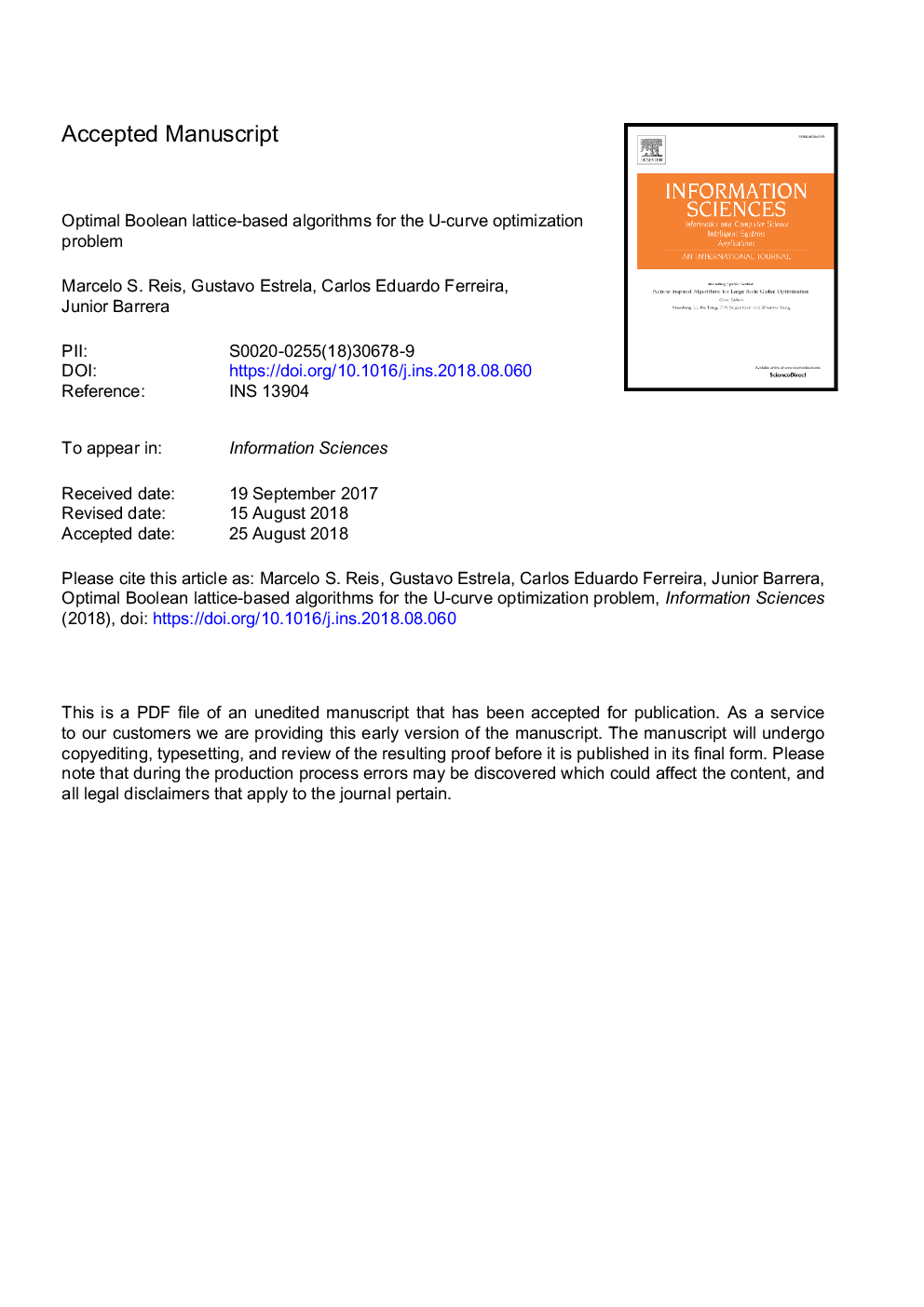| Article ID | Journal | Published Year | Pages | File Type |
|---|---|---|---|---|
| 10145930 | Information Sciences | 2019 | 41 Pages |
Abstract
The U-curve optimization problem is characterized by a decomposable in U-shaped curves cost function over the chains of a Boolean lattice. This problem can be applied to model the classical feature selection problem in Machine Learning. In this paper, we point out that the firstly proposed algorithm to tackle the U-curve problem, the RBM algorithm, is in fact suboptimal. We also present two new algorithms: UCS, which is actually optimal to tackle this problem; and UCSR, a variation of UCS that solves a special case of the U-curve problem and relies on a reduced, ordered binary decision diagram to control the search space. We provide results of two computational assays with these new algorithms: first, W-operator design for filtering of binary images; second, linear SVM design for classification of data sets from the UCI Machine Learning Repository. We show that, in these assays, UCS and UCSR outperformed an exhaustive search and also three widely used heuristics: the SFFS sequential selection, the BFS graph-based search, and the CHCGA genetic algorithm. Finally, we analyze the obtained results and point out improvements that might enhance the performance of these two novel algorithms.
Related Topics
Physical Sciences and Engineering
Computer Science
Artificial Intelligence
Authors
Marcelo S. Reis, Gustavo Estrela, Carlos Eduardo Ferreira, Junior Barrera,
